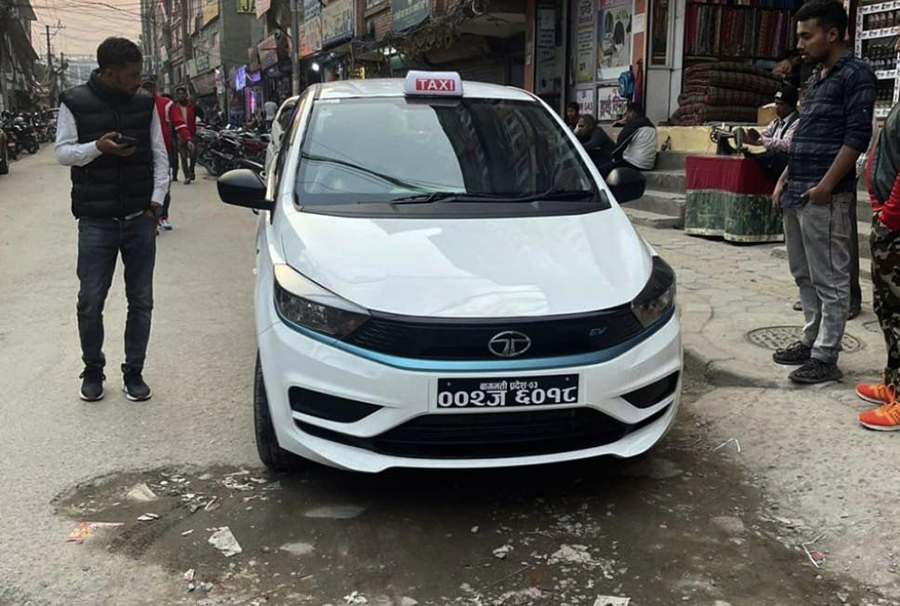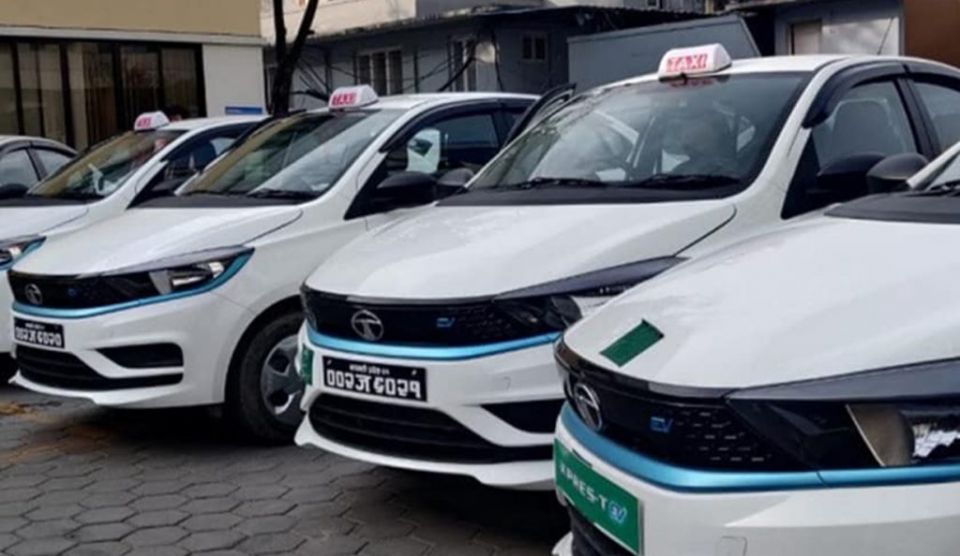
Nepal saw its first-ever electric vehicle in 1975 when it launched an electric trolley bus service. From then to now, things have changed a lot. Today, there are a lot of options for electric vehicles in Nepal; you can get two-wheeler, three-wheeler and four-wheeler electric vehicles.
Nepal has seen many electric four-wheelers used as private commutes and now there are provisions for public four-wheelers — electric taxis.
The rise of electric taxis in Kathmandu
The number of electric taxis has increased in Kathmandu of late. According to the Transport Management Office, Ekantakuna, Lalitpur, so far, there are 17 registered electric taxis and they have already started their operations.
“There has been an increase in the registration of electric taxis to replace the old taxis,” says Madan Pokharel, the chief of the Transport Management Office, “Now, we expect the number of electric taxis will increase further in the capital.”
The Bagmati province has established requirements that all newly registered taxis must be electric. Meanwhile, taxi owners are buying electric taxis under the Standards for Quality, Operation, and Management of Public Passenger Taxi Service issued by the Ministry of Labour, Employment and Transportation in the Bagmati province.
According to the new standard, the taxis will be divided into two categories; ordinary taxis and special (deluxe) taxis. Although the government has announced to set a different taxi fare for ordinary and deluxe taxis, nothing has been done yet.
Besides, in order to replace 20-year-old taxis operating in Kathmandu, it recommends buying electric taxis.
As per the rule, once they are charged, the ordinary electric taxis should be able to travel 210 kilometres and the deluxe taxis should be able to travel 275 kilometres.
Currently, taxi owners are registering the XRPRES-T EV of Tata as an electric taxi. Other companies are also preparing to bring electric taxis to the market.
New requirements

Likewise, the new standard states that if someone wants to replace the registration of the taxi before 20 years in operation, the manufacturing date of the taxi should reach at least 15 years. The taxi should also have a digital display board with a metre.
For the special nature of the taxis, there is a provision of using sedans and vans as taxis. Before this, Nepal does not have the practice to use vans as a taxi.
According to the ministry, the transmission of a taxi should be automatic, the boot space of an ordinary taxi should be 200 litres and for a special taxi, it should be 250 litres. Then, the engine capacity for both the ordinary and special taxis should be 50 kilowatts, each.
Lithium-ion batteries should be 20 kilowatts for ordinary taxis and above 40 kilowatts for special ones. The ground clearance for an ordinary taxi should be 170mm and in the case of a deluxe one, it should be 175mm. There should be a driver airbag in an ordinary taxi and a dual airbag in a deluxe taxi. In ordinary taxis, only the driver’s airbag has been made compulsory. Hence, the safety of passengers has been neglected.
Likewise, for deluxe taxis, there is no compulsion to have Wi-Fi, headroom, legroom, sufficient space, mobile charging facility, cupholder, electric window opener, headrest, AC, screen touch display in the backseat, neglecting the facilities for the passengers.












